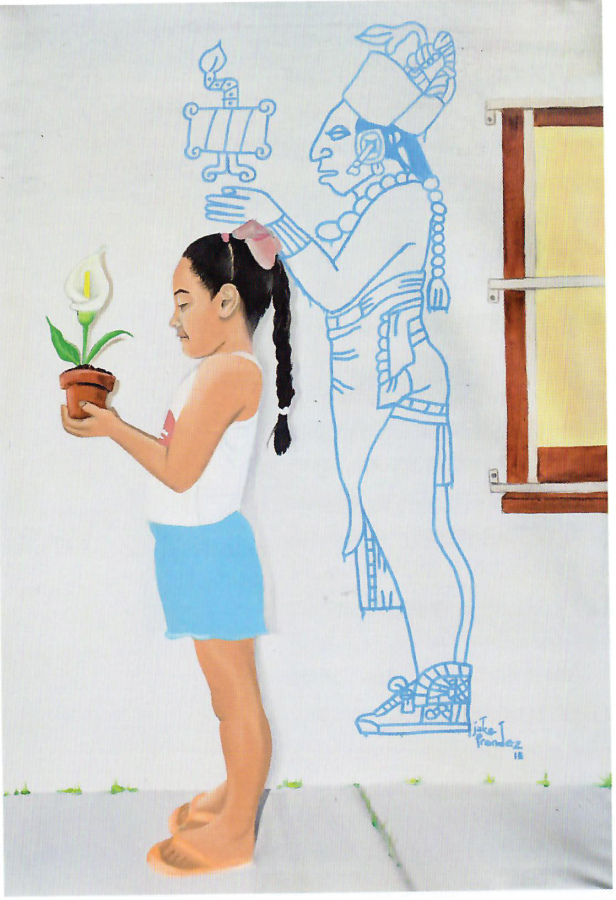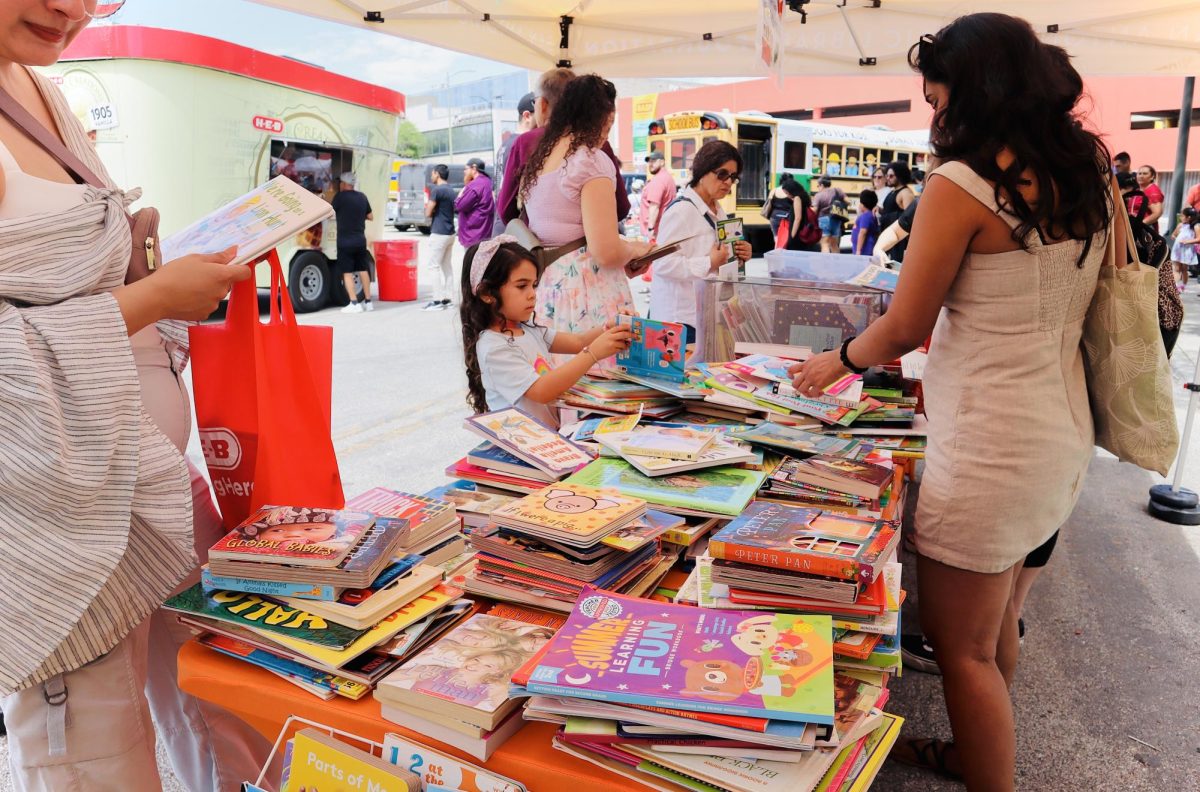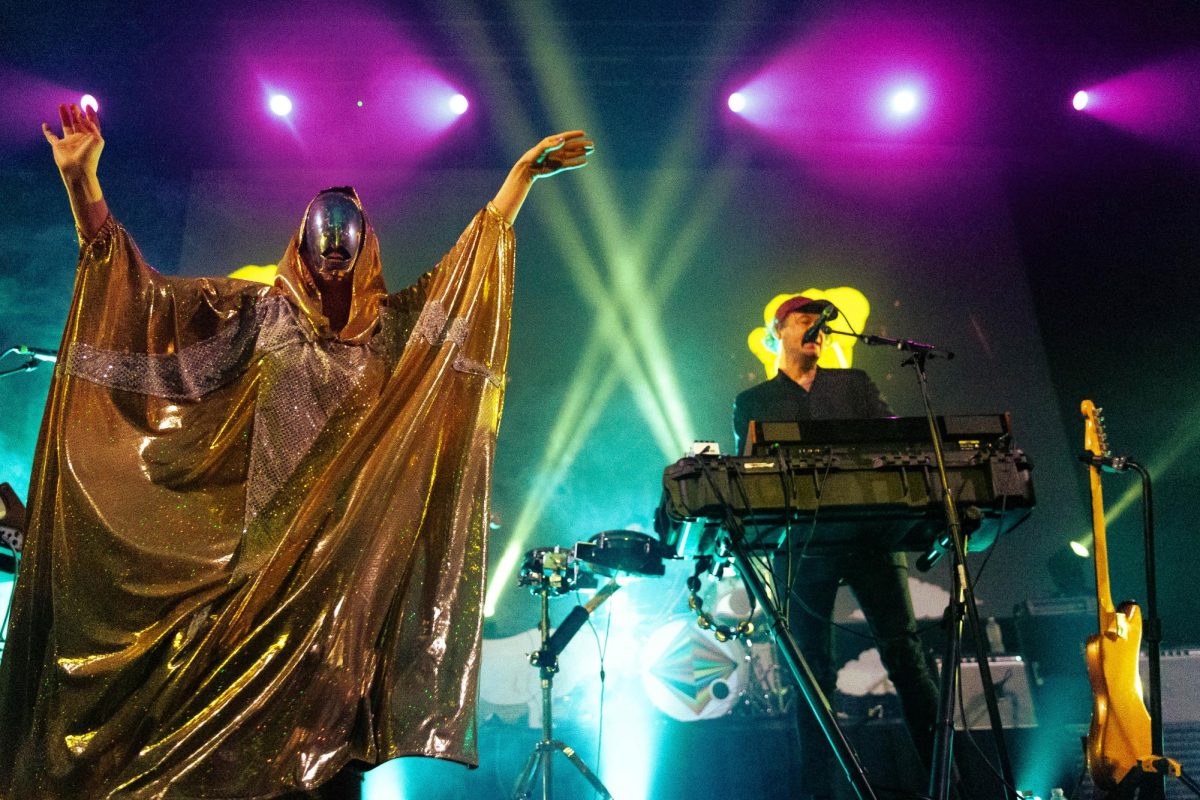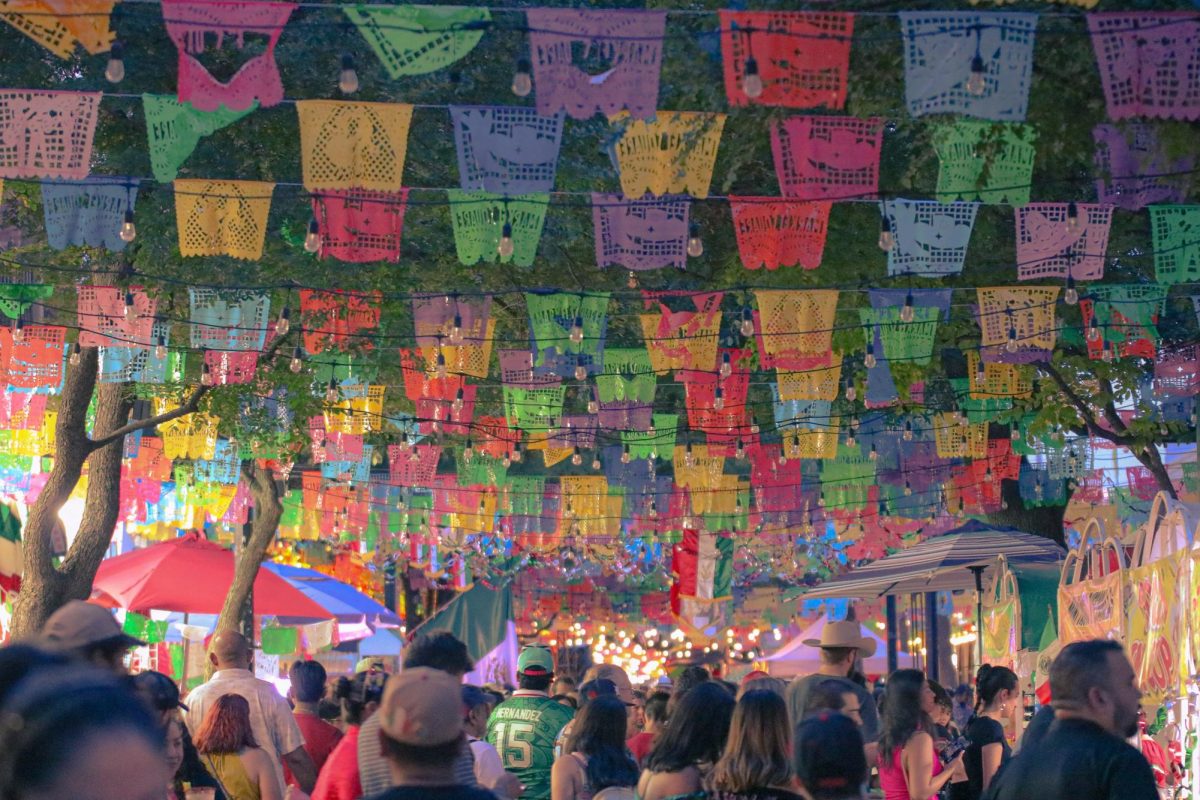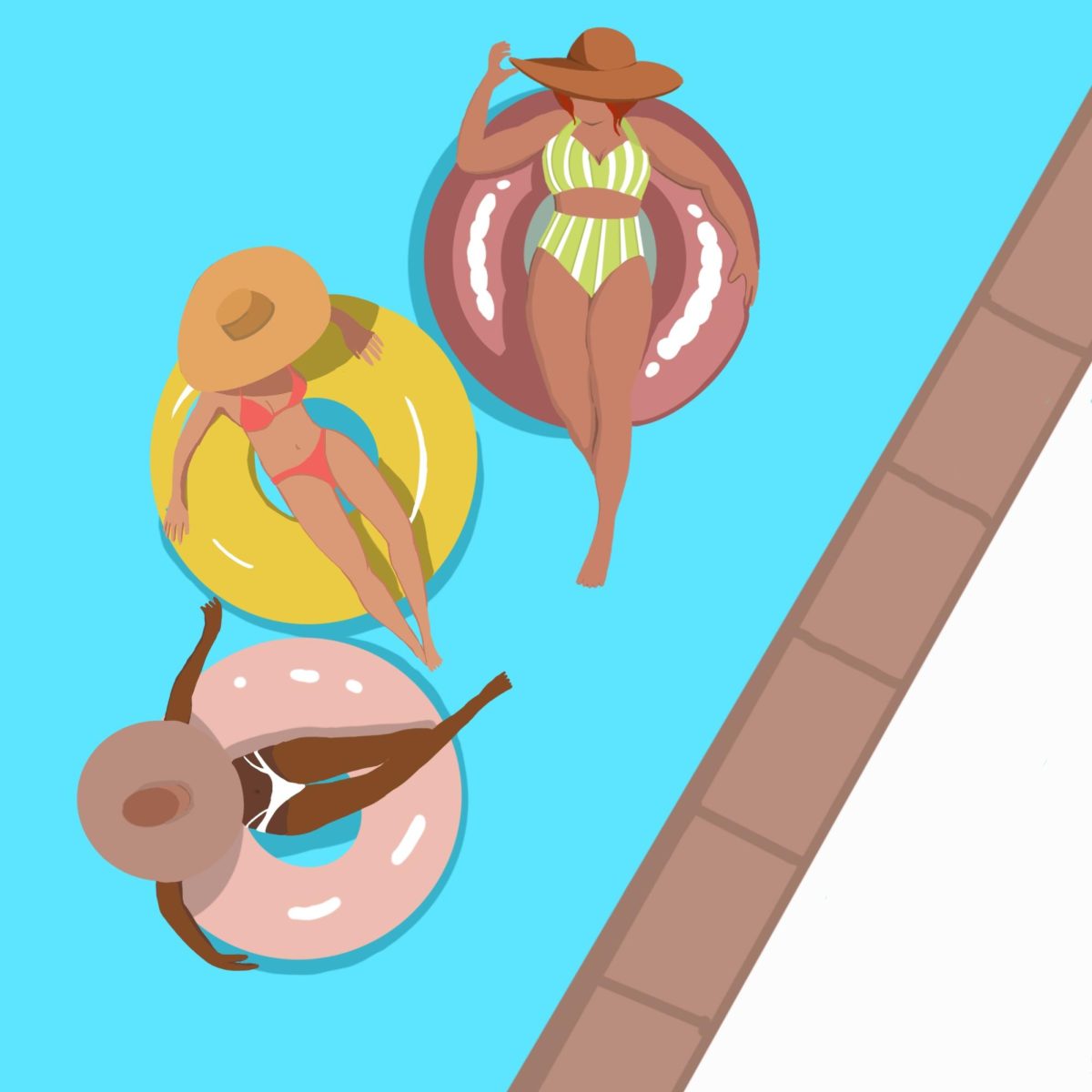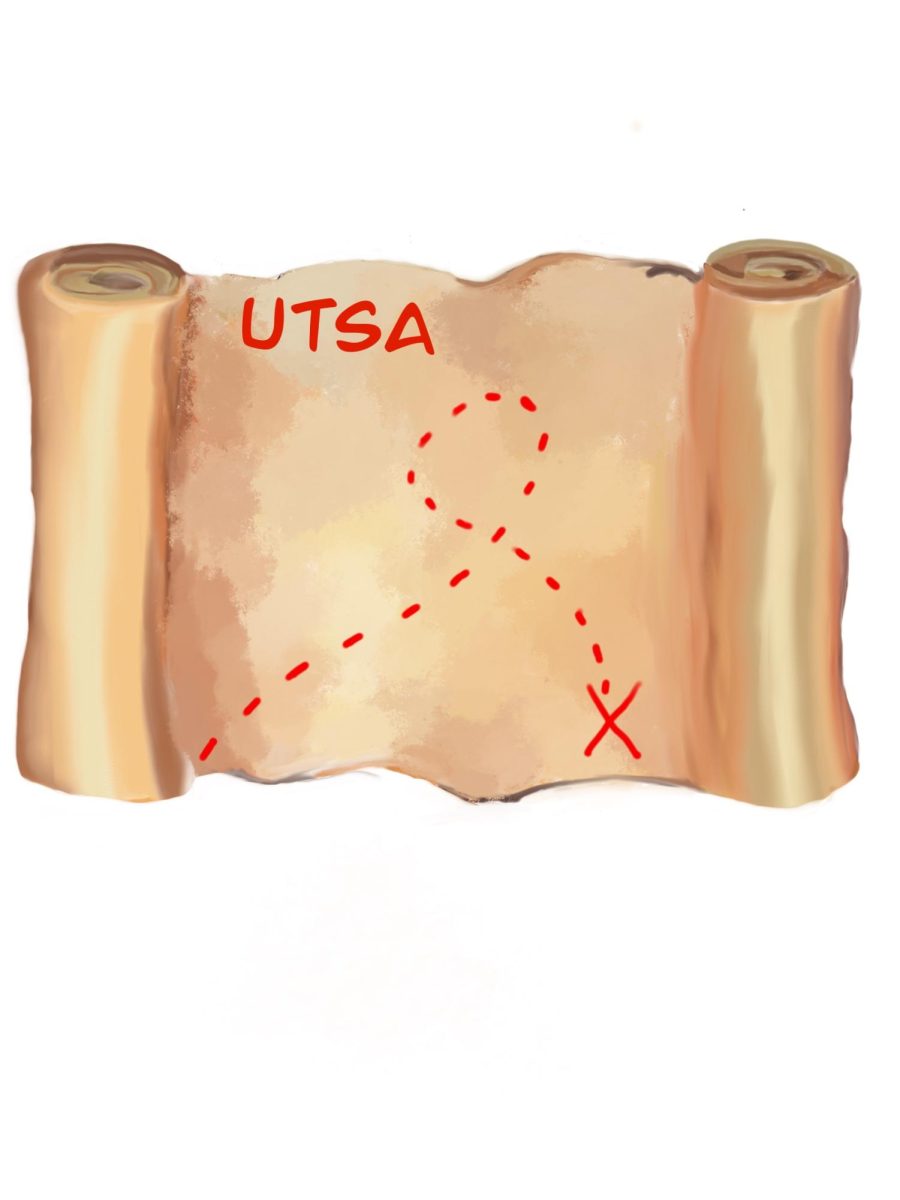The current exhibition at the Centro de Artes Gallery, “Nuestra Latinidad”, consists of artwork from four solo shows which explore identity and connection to one’s heritage and Latinx culture through photography, paintings and drawings. These shows feature pieces from artists of Mexican descent such as Delilah Montoya, Joshua Perez, Gabriel Villa and Jake Prendez.
On March 21, the gallery held an artist discussion panel featuring Perez, Villa and Prendez. Additionally, this event marked the official release of the exhibit’s catalog, which contains photos of some of the pieces from each solo show and information about each artist, all written by Elda Silva.
Perez is a San Antonio-based artist who began creating in high school through painting and street art.
“The graffiti world was sort of like a free art school … I learned a lot about resourcefulness and just trying to take on large projects. I was really lucky to have a mentor that was a really active muralist and graffiti writer in San Antonio for a long time,” Perez said.
Later on in college, street photography greatly intrigued Perez, and what started off as taking photos for class during his commute from the southside of San Antonio to downtown, soon became his passion.
His exhibit, “Todo Está Bien, Everything’s Good,” features photos taken over the course of three years and are shot on 35mm and medium format black and white film. These pictures depict daily life in predominantly Mexican-American and African-American communities throughout San Antonio. Perez’ goal is to “illustrate the feeling and spirit” of the people in his photos and the community as a whole.
While taking these photos, Perez learned that although the areas he was in had high crime rates and bad reputations, the people there did not mind him taking photos or having conversations with them.
“I found that it was really exciting that people were willing to share themselves with me,” Perez said.
Villa, another panelist, was born in El Paso and is a Chicago-based artist. He currently lives in Pilsen, a neighborhood in the lower west side of Chicago where the majority of the population is of Mexican descent. This community gave Villa most of his inspiration for his series “Human Dive.” This exhibit showcases paintings and mixed media drawings that were created over the last ten years.
“I moved to Chicago … but I started to see a lot of the same issues that had to do with class and divisions. Those kinds of things began to speak to me and then I started to really focus on things that had to do with people who are marginalized,” Villa said.
Villa’s exhibit also features autobiographical mixed media drawings from his “Flayed” series, which chronologically depict his journey as an artist as well as his connection to his family and environment.
“When I think about vision, I don’t think artists really create necessarily with their eyesight … it’s a tool, but really it’s your brain and it’s your temperament … that’s driving the overall works of art,” Villa said.
Prendez was born in California and is now a Seattle-based artist. His work focuses primarily on Chicanx identity and ancestral connection. His exhibition, “Genetic Memory: Xinachtli to Xochitl,” shows paintings that represent ancestral influences to the modern-day Chicano life. The name of the exhibit references the development of a seed to a flowering plant.
“I get frustrated when people talk about the Mayans, the Aztecs, and the indigenous communities as extinct people. We’re not. We’re still here … We might not dress like our ancestors, but our culture survives in the way we sing, the way we dance … that’s genetic memory and it’s passed down generation after generation,” Prendez said.
Prendez also uses his paintings to discuss political issues in America. For example, his art often makes references to the Dreamers and the political administration, which provoke thought and discussion about some of the issues minorities face.
“Nuestra Latinidad” is free to the public and closes June 1 at the Centro de Artes Gallery, located at 101 South Santa Rosa Street by Market Square. The gallery is open Tuesday to Sunday from 11 a.m.–6 p.m. More information about this exhibition as well as other events can be found at getcreativesanantonio.com.






